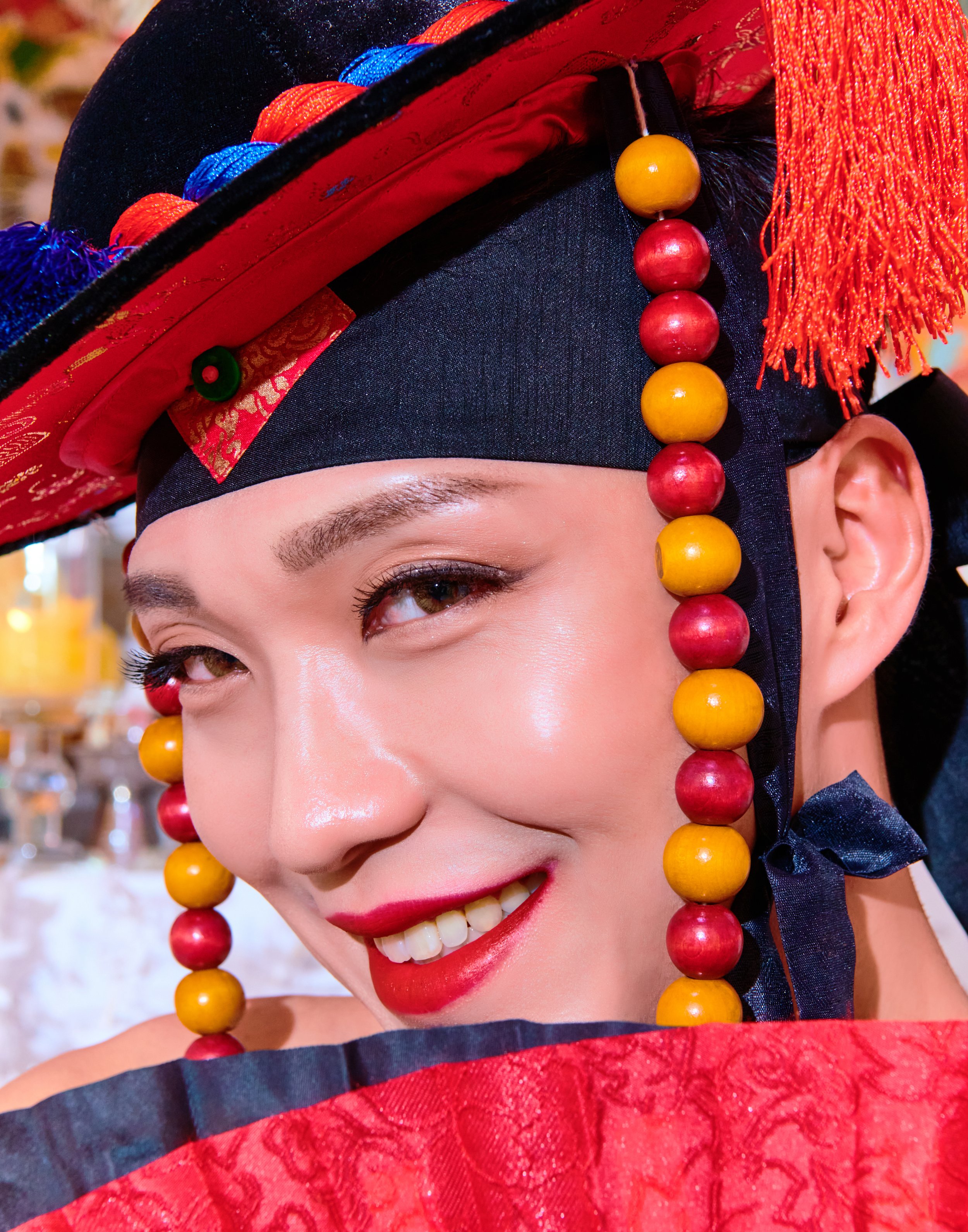Who owns shamanism?
Written by Robin Bortner
Korean shamanism is a cacophony of color, sound, symbols, and movement. The excess of meaning overwhelms the intellect into silence, which is perhaps the point: somewhere in all that spinning, the spirits find a bridge to descend into the shaman and dispense their advice through her.
Or perhaps through him. Shamans are women by tradition, but despite its age, shamanism never has been traditional. If the practice has one connecting thread, it is radicalism. With its bold performance art, it responds to oppression from political power and social convention by expressing precisely that which is rejected.
In English, a word like shaman conjures a set of unconscious binaries: female shaman/male priest; institutional religion/folk belief; urban secularism/rural credulity; progressive science/timeless archetypes; liberated modernity/cloistered shrine. Yet these binaries are constructs, unreflective of what shamanism is and has been.
In his godmother’s household shrine in a Busan villa, a young English-speaking shaman called Tae wants to use his practice to change the popular imagination of his vocation. “Tradition has to correspond to our modern society,” he argues. “Shamans were always with the people. Buddhists were away from the village, but the shaman’s house was always by the entrance for everyone to visit and to protect the people from evil.”
What does it mean to be with the people? Historically it has meant responding to the unaddressed needs of the people. Under the Joseon Dynasty, with its Confucian-driven patriarchal and intellectual values, shamanism became a place for feminine expression of spiritual concerns. Due to the length of this political period, this is the type of shamanism that constructs the outline for its modern form. Yet shamanism, with its ever-evolving lore, passed down orally from master to apprentice, transcends its history even as it draws from it.
Urbanism and modern technology have created a new dimension within the spiritual world in order to address contemporary problems. For example, “shamans now recognize wood imps that sneak in with the wood of a television or the spirits of new cars.” Middle-class clients ask their shamans for advice regarding stock investments or their children’s college majors, and shamans call upon the appropriate being to solve the problem, perhaps a great-grandmother who had a successful business or a spirit entirely unknown before the moment.
Writing about shamanism during the 90s debt crisis, Laurel Kendall observed that financial stress also changed the type of spirits that appeared. “The gods’ demands become a parody of client aspirations in a society that regards commerce with profound ambivalence as a rewarding but also a dirty and suspect enterprise,” she wrote. These arrogant beings called themselves the “Spirit Warrior of Business and the Spirit Warrior of Commerce” and promised good luck in exchange for expensive rituals.
As a new shaman, Tae must decide for himself how he will use the traditional practice to meet the demands of twenty-first-century Korean society. For a start, he wants to add elements of modern art into the performance. “We use a lot of traditional instruments like drums, which are important, but I want to use different ones like the electric keyboard.” Beyond this, Tae aspires to open up shamanism beyond Korean society and to one day give large stadium-sized performances which merge musical festival energy with spiritual elements like an old-time Christian revival.
“Under the Joseon Dynasty, with its Confucian-driven patriarchal and intellectual values, shamanism became a place for feminine expression of spiritual concerns. ”
Tae and his godmother visit artistic performances around the country, including the National Theater, where they look for new ideas in creative direction. The result is a surprising fusion of Joseon and TikTok aesthetics. In one photo, Tae wears a hanbok, but it is seductively bare-shouldered. In another, he pairs the feathered hat of a mountain spirit with a trim rose-red suit and sunglasses. These images are striking both in their modernity and in their deliberate blurring of gender.
In explanation of these choices, Tae says that the spirits he channels are not angelic beings. They are of a higher order of reality than humans, but they still possess humanlike qualities. “Sometimes they swear, Korean spirits, and they love pretty things: art, music, fashion, makeup, style. They are not always holy.”
Beyond changing his aesthetics to better match the spirits that he channels, Tae hopes to join other shamans in continuing the expansion and social acceptance of the practice. Due to its long history and distinct Korean identity, shamanism is now officially recognized as part of Korea’s intangible cultural heritage. This is a significant liberation following its centuries of social relegation under Joseon and its outright persecution during the 1970s.
Recognition, however, also changes any cultural practice. To gain and maintain government patronage, shamans sometimes “alter the original rituals, contextualize the songs and order of performances, and emphasize historical characters while avoiding overtly religious contexts.” Moreover, the increased public presence of shamanism has not gone without criticism, especially with regard to its influence on high-profile government figures.
Shamanism is not fixed. It has no holy book nor centralized institution. It is sometimes passed down through family generations and sometimes through an unshakable spiritual possession of an individual, as is the case with Tae. Without the slightest regard for contemporary moral sentiments, it reveals the side of Korean culture which otherwise remains hidden. In so doing, shamanism can take the multitude of forms envisioned by its practitioners, but it can never be forced to serve a single purpose. Korean shamanism is owned by the entirety of Korean culture and the spirits the shamans see watching over it.
Follow Tae on Instagram @tae_thedelightful.









